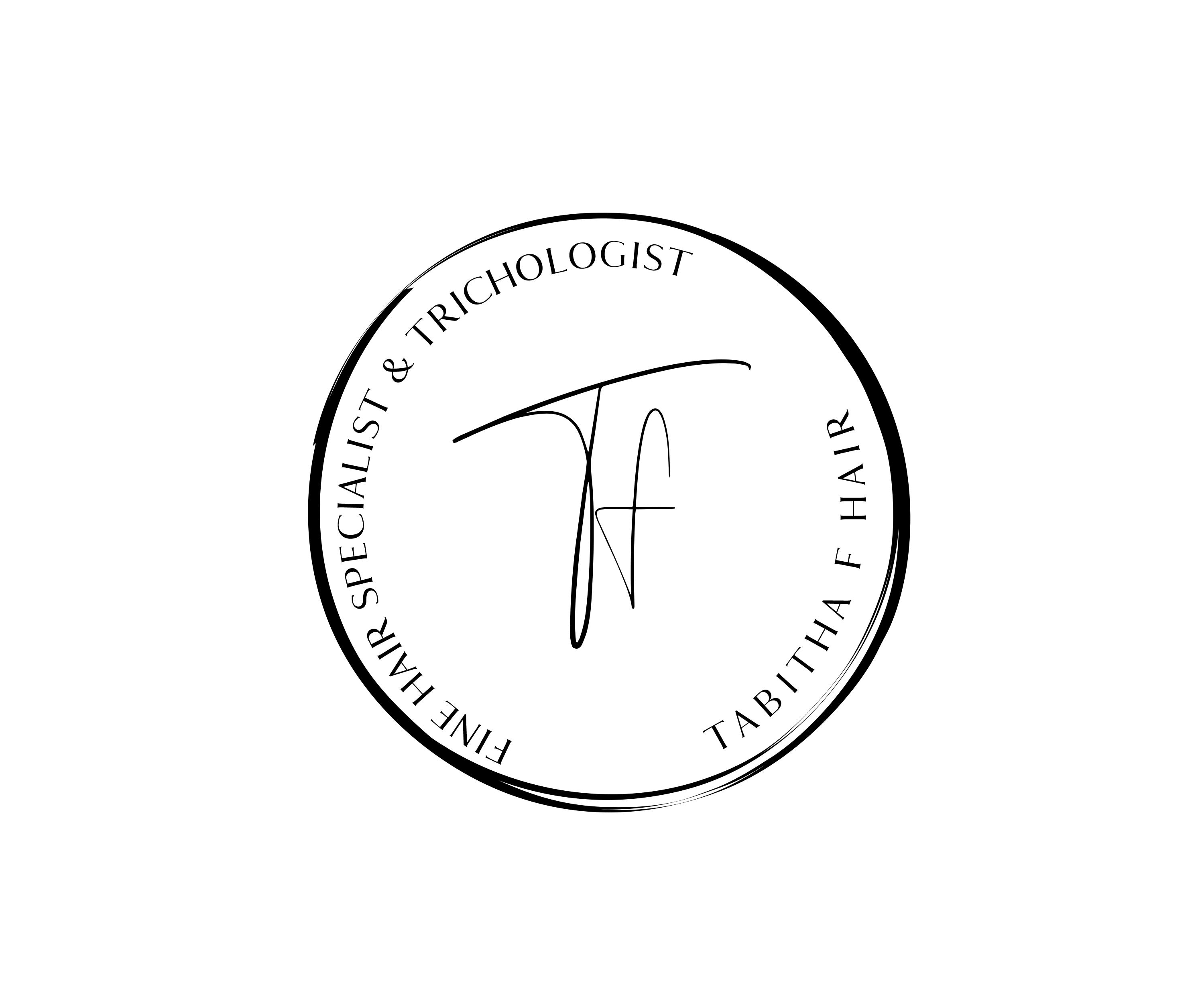Special Announcement to All Hairstylists: How to Prevent Traction Hair Loss for Clients Using Hair Extensions.
- Tabitha Fredrichs

- Sep 1, 2024
- 4 min read

Hey there, talented hairstylists! If you’re working with hair extensions—whether it’s tape-ins, sew-ins, glue-ins, or fused—you know how transformative they can be for your clients. But here’s the thing: the very extensions that give your clients length and volume can also pose a risk to their natural hair health, particularly when it comes to traction hair loss. This is especially true for clients with fine or thinning hair. Let’s dive into how you can protect your clients’ hair by understanding and preventing traction hair loss—and why adding a dermascope examination to your extension services can be a game changer.
The Weight Factor: Why Extensions Can Be Risky
Q: What is traction hair loss and why is it a concern for extension-wearers?
A: Traction hair loss (traction alopecia) is hair loss caused by the continuous pulling force applied to the hair follicles. This is particularly common in clients who regularly wear hair extensions. The added weight of extensions can create tension at the hair root, leading to damage over time. For clients with fine or thinning hair, this risk is even greater because their natural hair may not be strong enough to support the additional weight without breaking.
Traction hair loss often occurs when extensions are wet because wet hair extensions become significantly heavier, placing extra stress on the natural hair and follicles. This added weight can exacerbate pulling, especially during movement, making the hair more susceptible to breakage and loss. Additionally, when clients sleep, the friction and movement against their pillow can increase this tension, leading to further damage. To help prevent these issues, it's essential to educate your clients on proper at-home care for their extensions. Providing them with a take-home pamphlet that includes detailed instructions on how to care for their extensions, along with a kit that contains a wide-tooth comb and a sleeping bonnet, can make a huge difference. This thoughtful gesture not only helps maintain their hair health but also sets you apart as a stylist who genuinely cares about the long-term well-being of your clients' hair.
Using a Dermascope: Your New Best Friend
Here’s where things get really interesting—and where you can offer a service that not many others do. By using a dermascope, you can examine your client’s scalp at a microscopic level to identify the early signs of traction hair loss. Here’s what to look for:
Broken Hairs: Under a dermascope, broken hairs are more visible. They often appear shorter and thinner than healthy hairs. This can be an early indicator that the extensions are causing too much tension.
White halo's at the Follicle: When hair extensions are too tight, you may notice white halos around the hair follicles. This is a sign that the blood flow to the follicle is being restricted, which is extremely dangerous for hair health. Prolonged restriction can cause permanent damage to the hair follicle, leading to irreversible hair loss.
Scalp Redness and Inflammation: Look for redness or inflammation on the scalp, especially around the areas where the extensions are attached. This is a clear sign that the scalp is under stress and the hair is at risk.
The Science Behind Traction Hair Loss
Q: How does traction hair loss happen at a scientific level?
A: Traction hair loss occurs when mechanical stress—such as the pulling from tight hairstyles or heavy extensions—causes damage to the hair follicle. This mechanical stress can lead to miniaturization of the hair follicle, where the follicle becomes smaller and produces thinner hair strands. Over time, if the stress continues, the hair follicle may scar, leading to permanent hair loss.
The constant pulling causes inflammation in the follicle area, which is why you might notice redness and swelling. The tension can also cut off blood supply to the follicle, as seen with the white halo's around the hair follicles. Without proper blood flow, the hair follicle cannot receive the necessary nutrients and oxygen, leading to weakened hair and eventually, hair loss.
Why This Matters to Your Clients—and Your Business
Now, imagine being able to offer your clients the peace of mind that their natural hair is being looked after while they enjoy the benefits of extensions. By incorporating a dermascope examination as part of your extension service, you’re not only providing a unique service that sets you apart from other stylists, but you’re also building trust with your clients. They’ll know that you’re not just there to give them great extensions—you’re there to ensure their natural hair stays healthy too.
Ready to Take the Next Step?
If you’re ready to elevate your services and protect your clients from traction hair loss, consider enrolling in TrichEDU Hair Loss Specialist Course. This course will give you the tools and knowledge you need to use a dermascope effectively, understand the science behind hair loss, and offer targeted solutions that will keep your clients’ hair healthy and beautiful.
Let’s make sure your clients leave the salon not just looking fabulous, but also feeling confident that their natural hair is in the best possible hands.
Wishing you a thriving business!
Tabitha





Comments